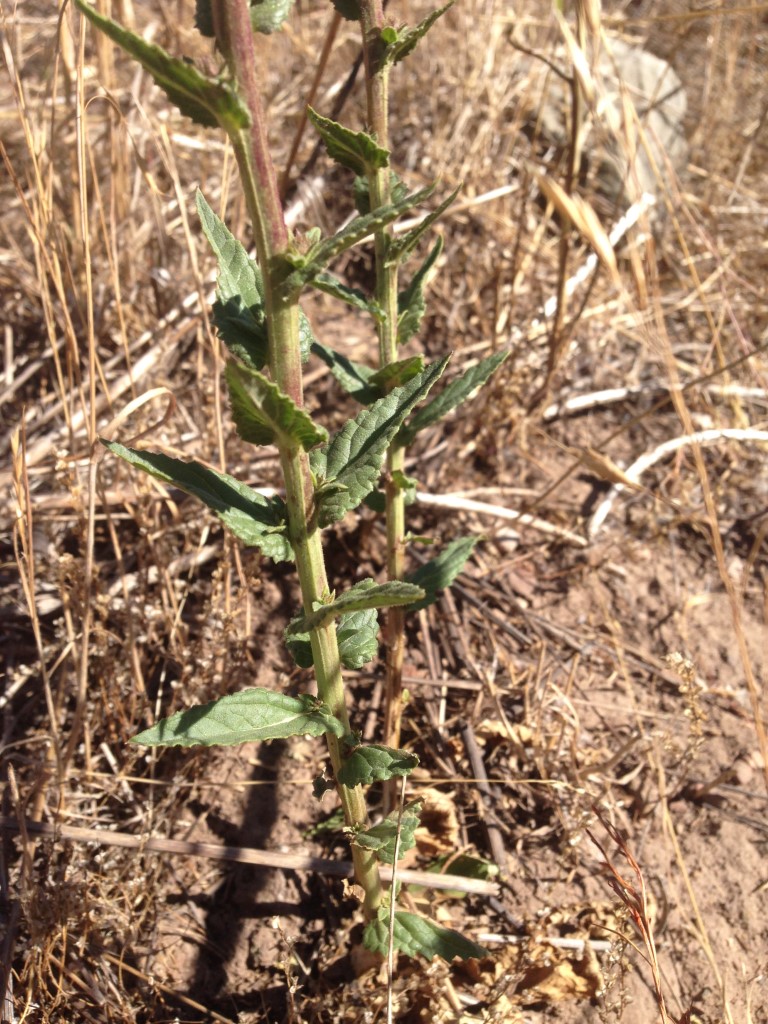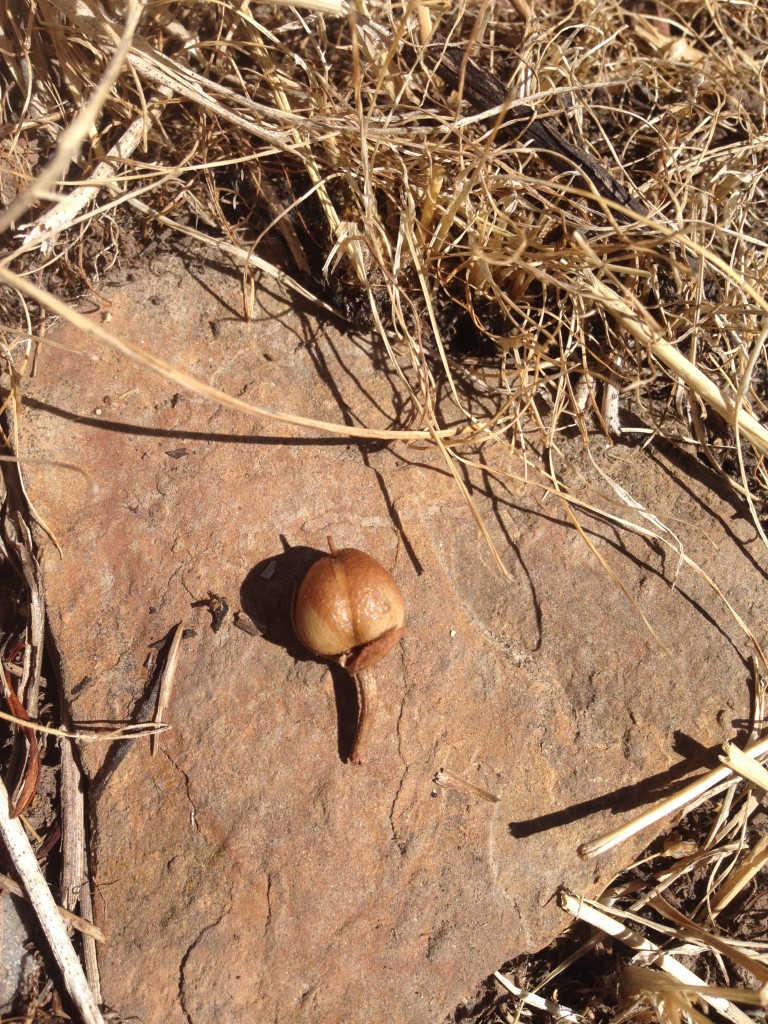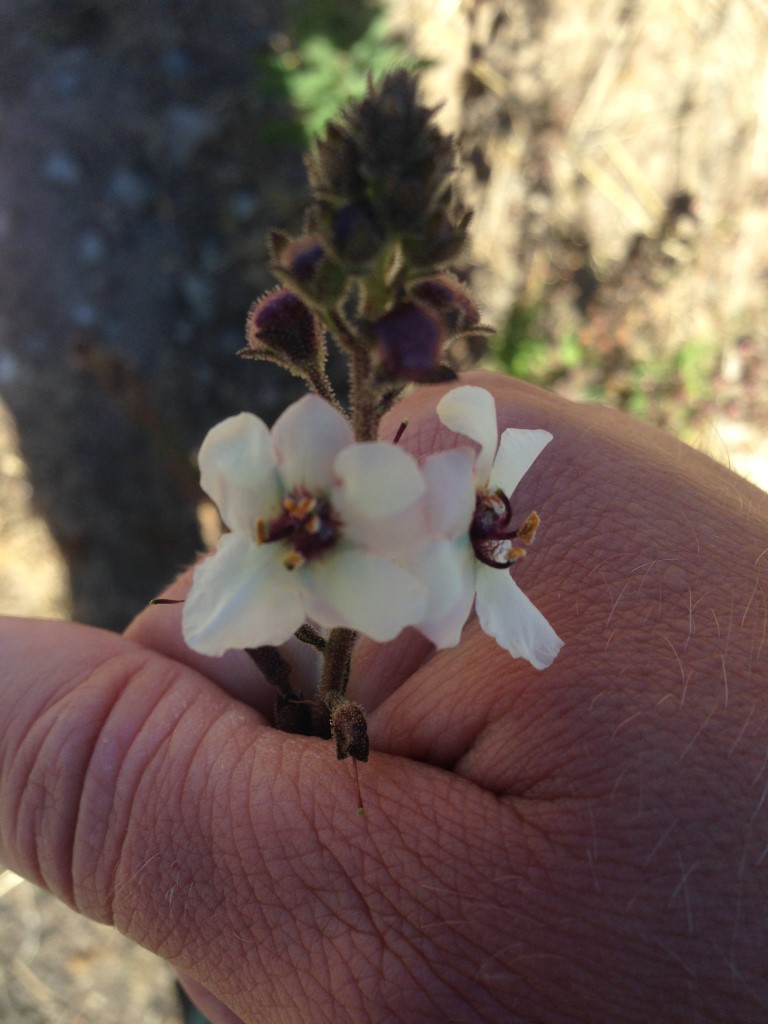
Moth Mullein
Description
Moth mullein is a biennial, and occasionally annual or short-lived perennial, forb in the Scrophulariaceae (figwort) family. It grows from a taproot to form a basal rosette in its first year of growth; in the second year of growth, it produces a single stem that may reach up to 5 feet tall. Leaves are dark green in color and only sparsely hairy. Leaves are oblong to oblanceolate and up to 8 inches long. Rosette leaves are toothed on the margins and have prominent veins. Leaves are alternate and decrease in size up the plant. Moth mullein flowers on spike-like racemes from mid-spring to late summer. Flowers are formed on small stems off the raceme; they are about 1 inch wide and have 5 yellow or white petals and 5 stamens with red or purple hairs. Seeds are formed in capsules with many small, dark seeds in each capsule.
Origin and Spread
Moth mullein is native to Eurasia and was intentionally introduced to North America in the early 1800s likely as both an ornamental and for medicinal use. It spreads solely by seed. Seeds are dispersed by humans, wildlife, livestock, and water, and moth mullein is frequently found in disturbed sites including levees, roadsides, landscaping, wildlife wallows, and eroded embankments.
.png)
Management Options
Prevention and cultural control strategies should be utilized as much as possible.
In Teton County, populations of moth mullein are not dense enough to sustain biological control agents; however, biological control agents available for common mullein may also be effective in reducing population density of moth mullein. Only one agent has been able to establish and overwinter in Teton County: seed head weevil (Rhinusa tetra).
Because moth mullein has a taproot, it can be readily managed by hand pulling or digging out the root. Tilling or hoeing can be effective in reducing existing plants; however, soil disturbance stimulates germination of common mullein seeds in the seedbank. Controlled grazing is not frequently effective because livestock avoid foraging on common mullein. Mowing or chopping are not effective in preventing seed production unless continued throughout the entire growing season or coupled with herbicide treatments. Do not mow while seeds are present.
Larger infestations can be controlled with herbicides. Spring and fall treatments of rosettes are recommended, but treatment of bolting plants can be effective. Flowering plants may be chopped and the remaining rosette and stem treated with herbicide to prevent reflowering. Read the label before using any herbicide. Contact TCWP if you have any questions about application rates or how to use an herbicide.
Additional Resources
- Moth Mullein - Verbascum blattaria. Montana Field Guide. Montana Natural Heritage Program.
- Monthly Weed Post: Moth Mullein. (2024). Montana State University Extension Invasive Plants.
- Moth Mullein (Verbascum blattaria). (2025). Ohio Perennial and Biennial Weed Guide. The Ohio State University Agricultural Research and Development Center.
- Rangeland-Pasture Recommendations: Common Mullein and Moth Mullein Identification and Management. Weld County Public Works Department - Weed Division. Weld County, Colorado.
- Moth mullein Identification and Management. (2019) Colorado Department of Agriculture - Conservation Services.


